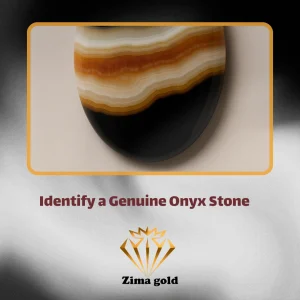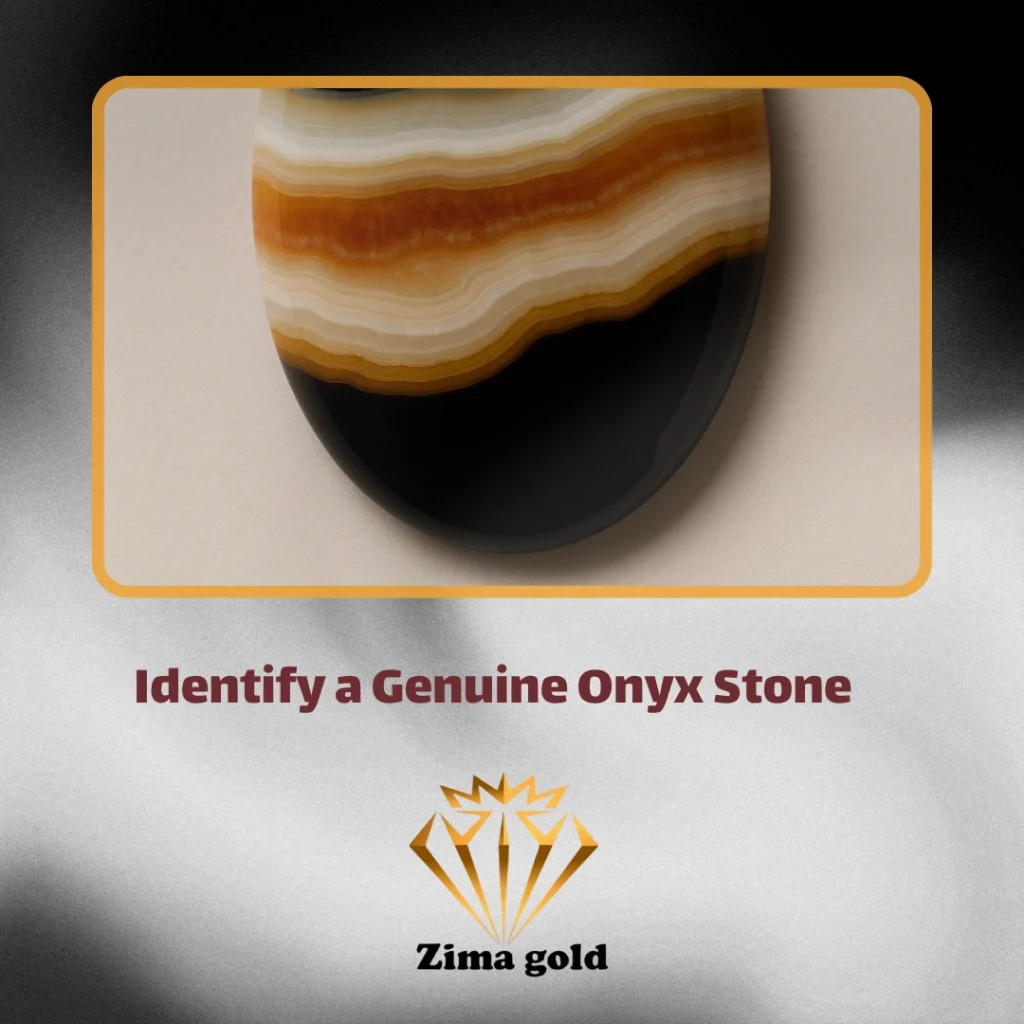Identify a Genuine Onyx Stone.Onyx, also known as black agate, is one of the most elegant and captivating natural gemstones.
It’s widely used in jewelry, ornamental carvings, and interior design thanks to its deep luster and smooth finish.
However, the market today is filled with synthetic or dyed imitations, making it important to know how to distinguish real onyx from fake.
This article provides clear, practical methods to help you verify the authenticity of onyx stones.
What Is Onyx?
Onyx is a member of the silica (quartz) family, characterized by layered or banded color patterns that give it a distinctive appearance.
These bands form naturally over millions of years through mineral deposition inside rocks and cavities.
Common onyx colors include black, white, brown, green, and occasionally reddish tones.
How to Identify Real Onyx
🔹 1. Examine Color and Natural Bands
Genuine onyx stones feature natural, slightly irregular color bands running parallel across the surface.
These bands are never perfectly even or uniform.
In contrast, fake onyx often has a perfectly smooth, overly bright, or monochrome color because it’s been dyed or heat-treated.
Pro tip:
If the stone looks entirely jet-black without any faint lines or shade variations, it’s likely synthetic.
🔹 2. Feel the Temperature and Weight
A real onyx stone feels cool and dense to the touch.
Artificial or resin-based stones, however, tend to feel warmer and lighter.
You can test this easily: hold the stone in your hand for a few seconds — if it warms up quickly, it’s probably fake.
🔹 3. Light Transparency Test
Natural onyx is semi-translucent, meaning it lets a small amount of light pass through but not fully.
Fake onyx may be too transparent (like glass) or completely opaque.
Hold it up to a light source — genuine stones reveal a faint glow or subtle color gradient.
🔹 4. Scratch Resistance Test
Real onyx has a hardness of 6.5–7 on the Mohs scale, making it relatively scratch-resistant.
Try lightly scratching the surface with a steel pin or knife.
If it leaves a visible mark or the surface feels soft, the stone is likely fake.
🔹 5. Inspect with a Magnifier or Jeweler’s Loupe
Using a 10× loupe, you should see natural, slightly wavy parallel lines in genuine onyx.
Fake stones often have printed or perfectly repetitive patterns that look unnatural upon close inspection.
🔹 6. Check the Weight
Due to its high mineral density, natural onyx feels heavier than imitations made of plastic, glass, or resin.
Even two stones of similar size can differ noticeably in weight — the lighter one is most likely synthetic.
🔹 7. Laboratory Gemological Testing
For a conclusive result, professional gem labs use tools such as spectroscopy, polarized microscopy, and UV light analysis.
These tests reveal the stone’s exact mineral composition and confirm whether it’s natural or treated.

Comparison Table: Real vs. Fake Onyx
| Feature | Real Onyx | Fake Onyx |
|---|---|---|
| Composition | Natural silica (quartz) | Resin, glass, or plastic |
| Color | Natural layered bands | Dyed, uniform color |
| Hardness | 6.5 – 7 (Mohs scale) | Less than 4 |
| Temperature | Cool | Warm |
| Weight | Heavy | Light |
| Light Transmission | Semi-translucent | Transparent or opaque |
Tips for Buying Genuine Onyx
-
Purchase only from reputable gemstone dealers.
-
Avoid overly glossy or unnaturally colored stones.
-
Examine the stone under natural daylight to see its true tone.
-
Be cautious of unrealistically low prices.
-
If unsure, request a gemological authenticity certificate.
Common Uses of Natural Onyx
-
Jewelry: rings, necklaces, and bracelets
-
Decorative sculptures and carvings
-
Interior design (tiles, countertops, ornaments)
-
Meditation and healing purposes (in traditional beliefs)
Conclusion
Onyx is one of the most striking and luxurious natural gemstones, valued for both its beauty and symbolism.
While fake versions are increasingly common, recognizing real onyx is simple once you know what to look for.
By observing color bands, weight, temperature, and texture — or seeking professional testing — you can confidently distinguish genuine onyx from imitations.
Always buy from trustworthy sources to ensure you’re getting a truly natural stone.

